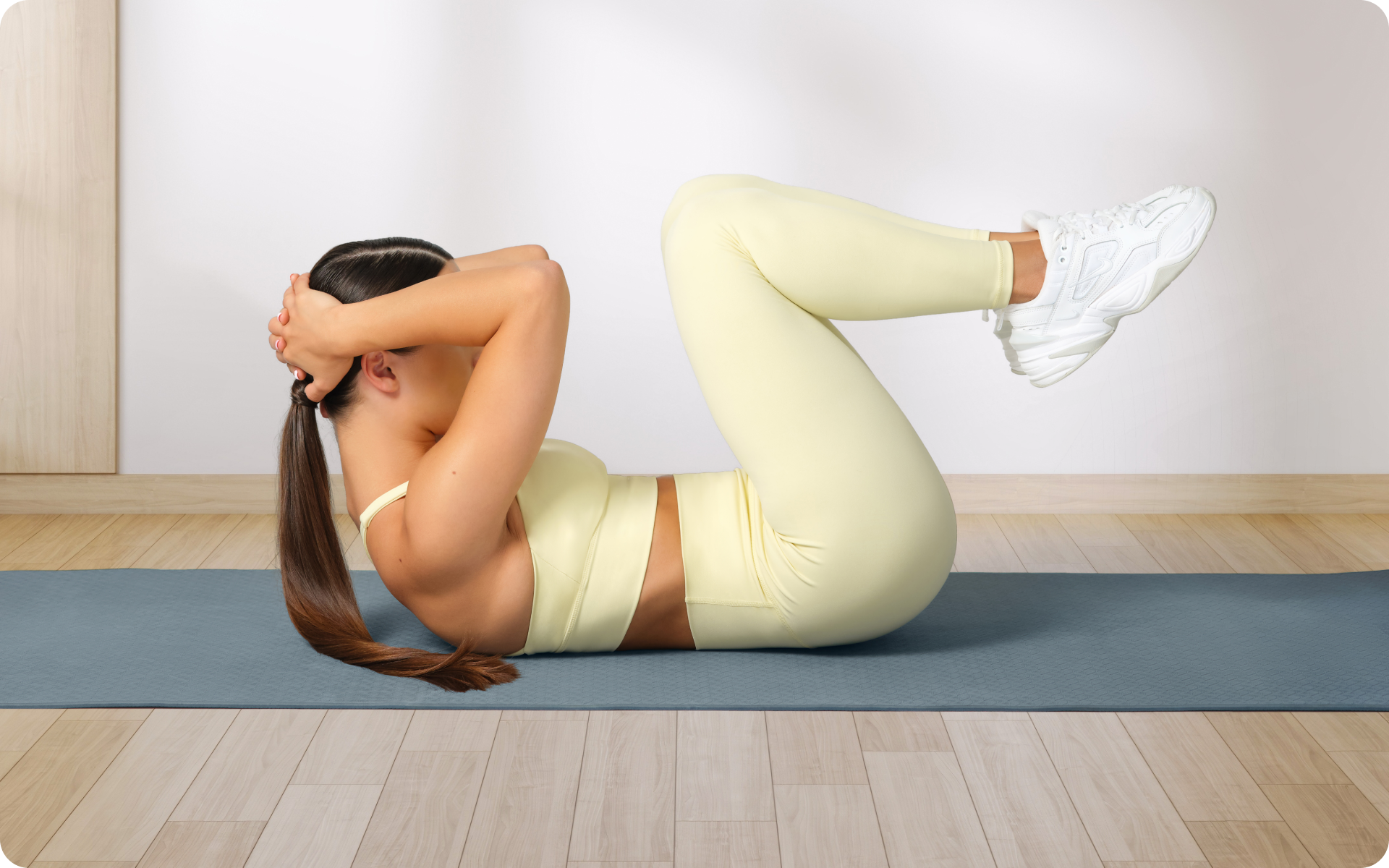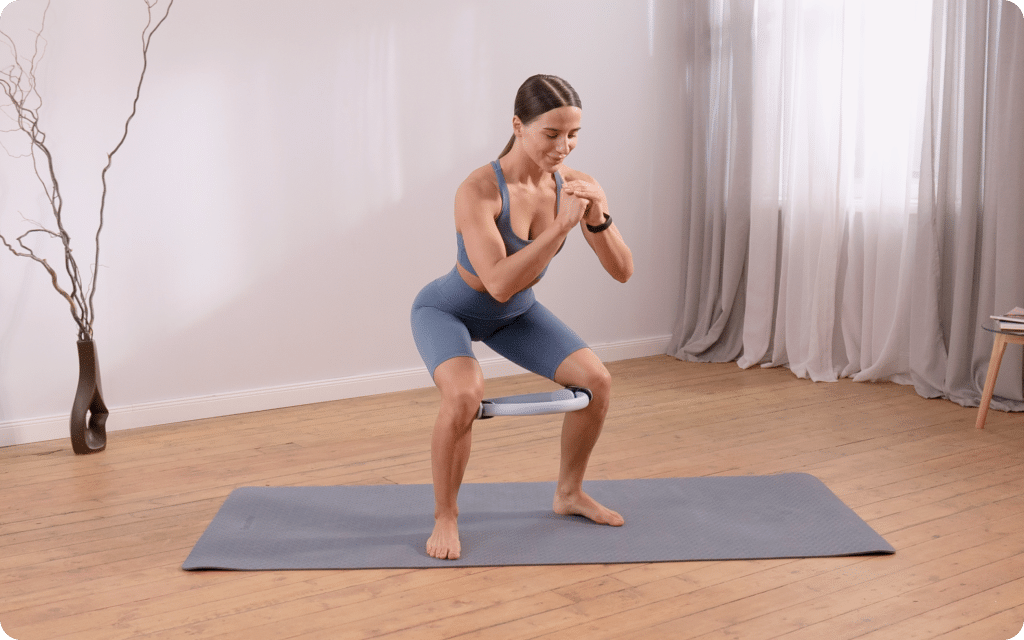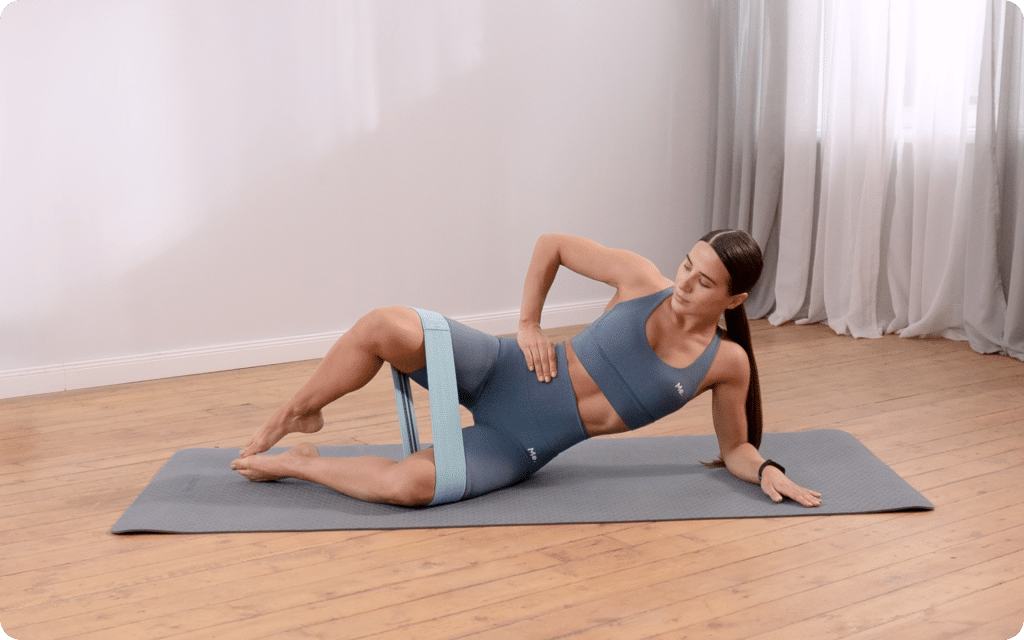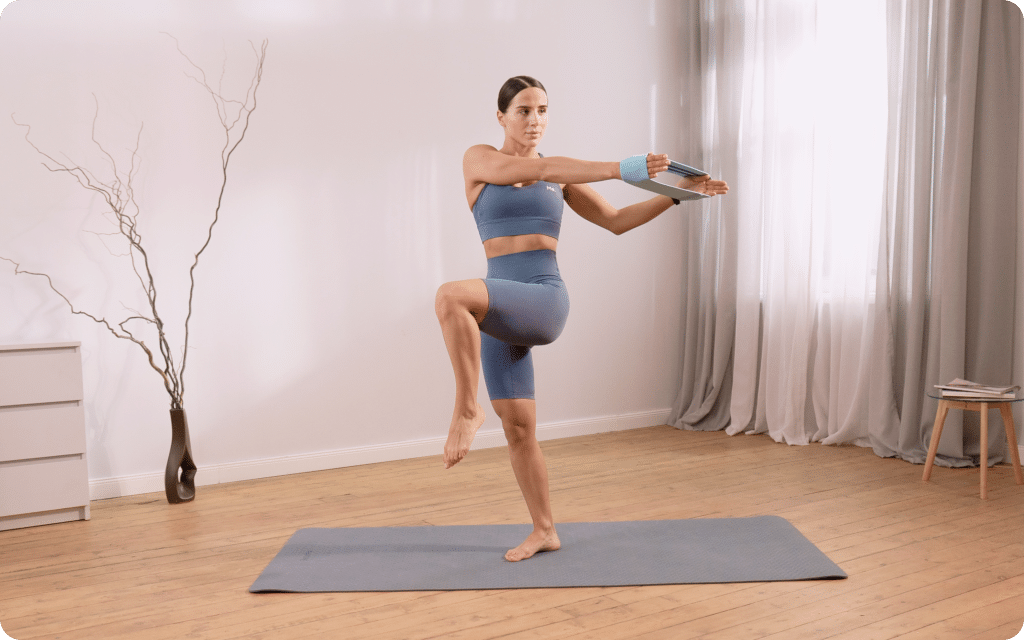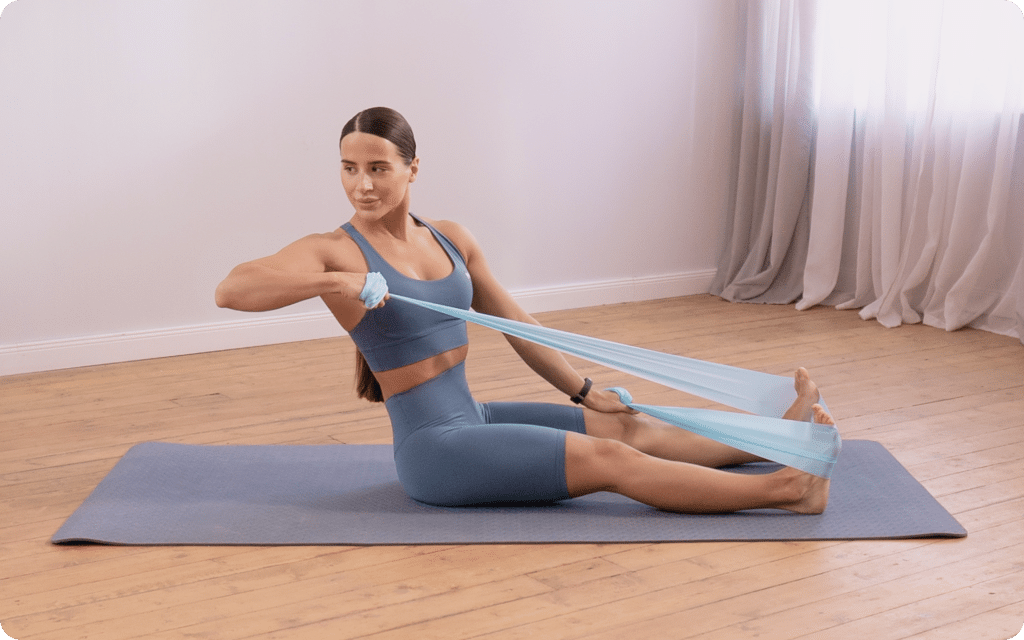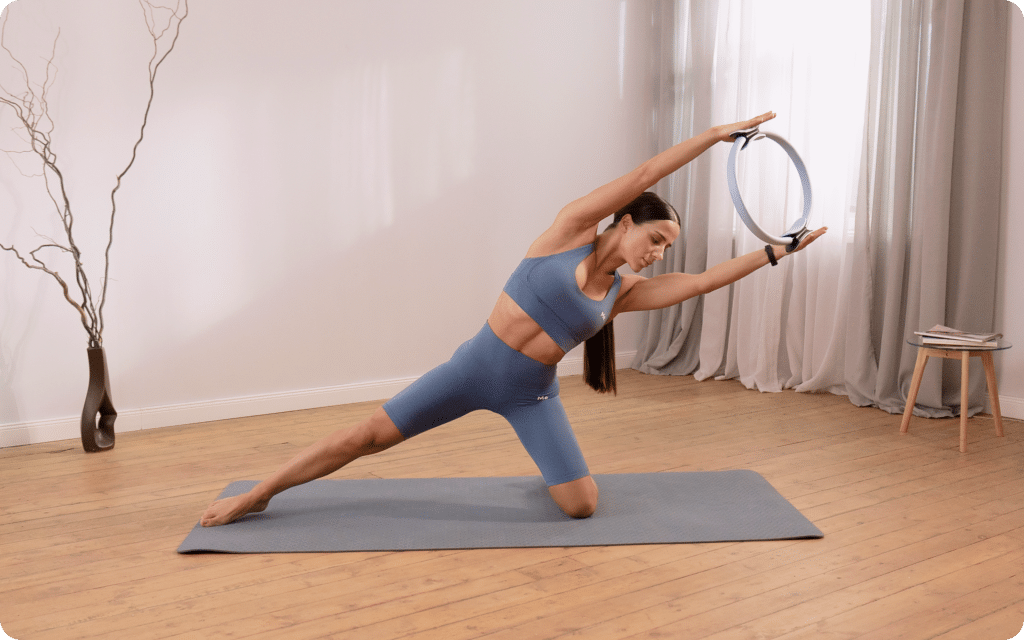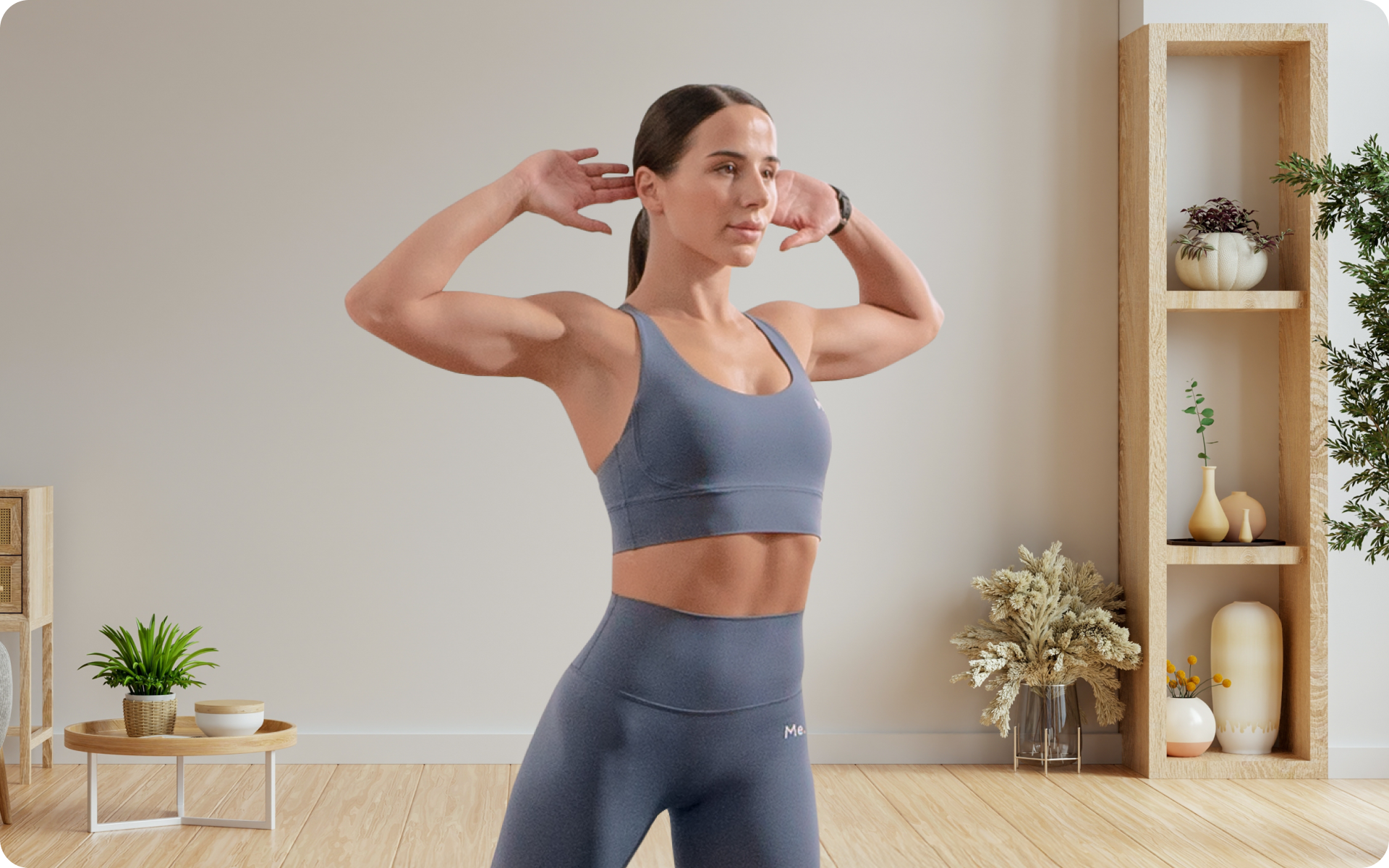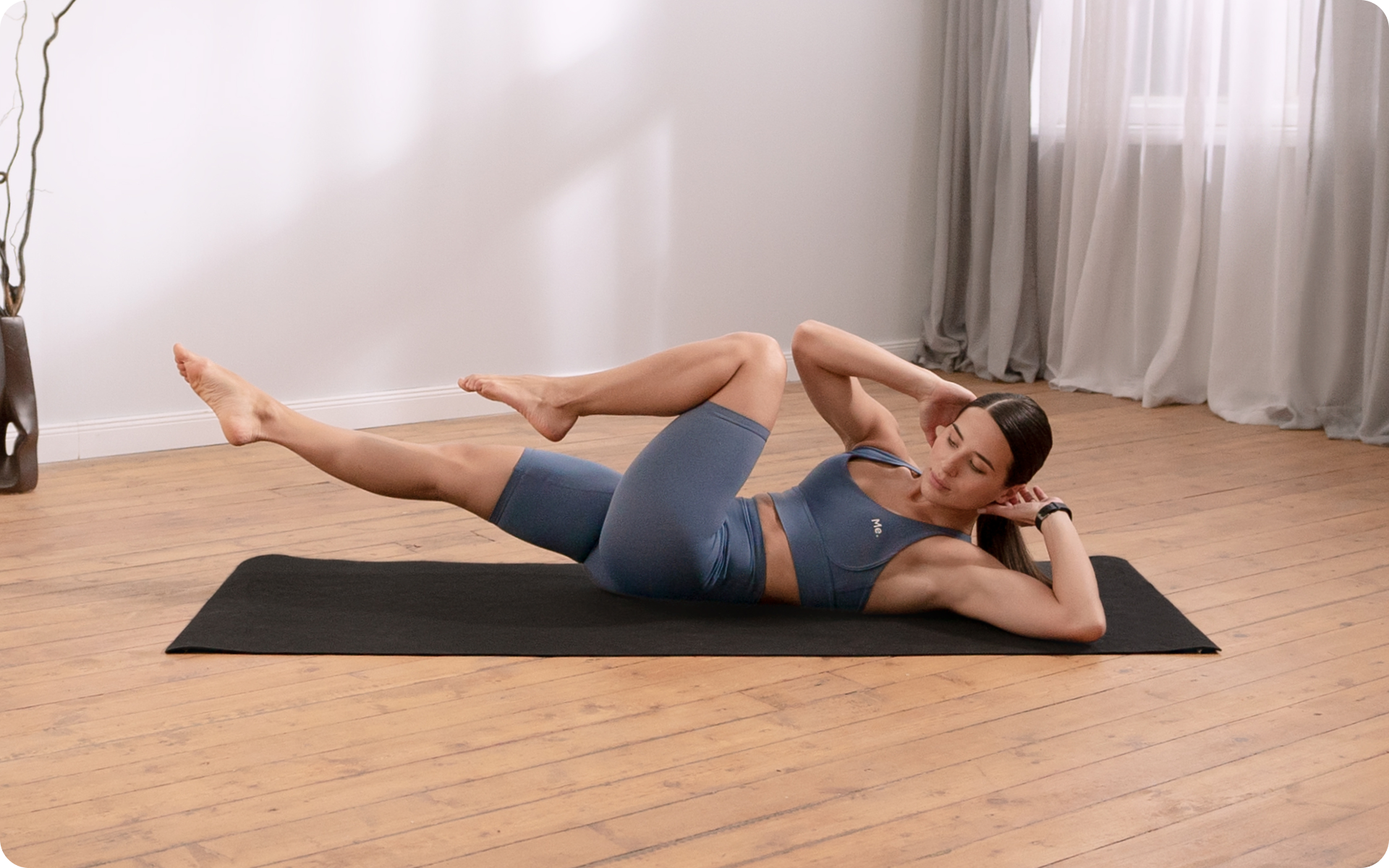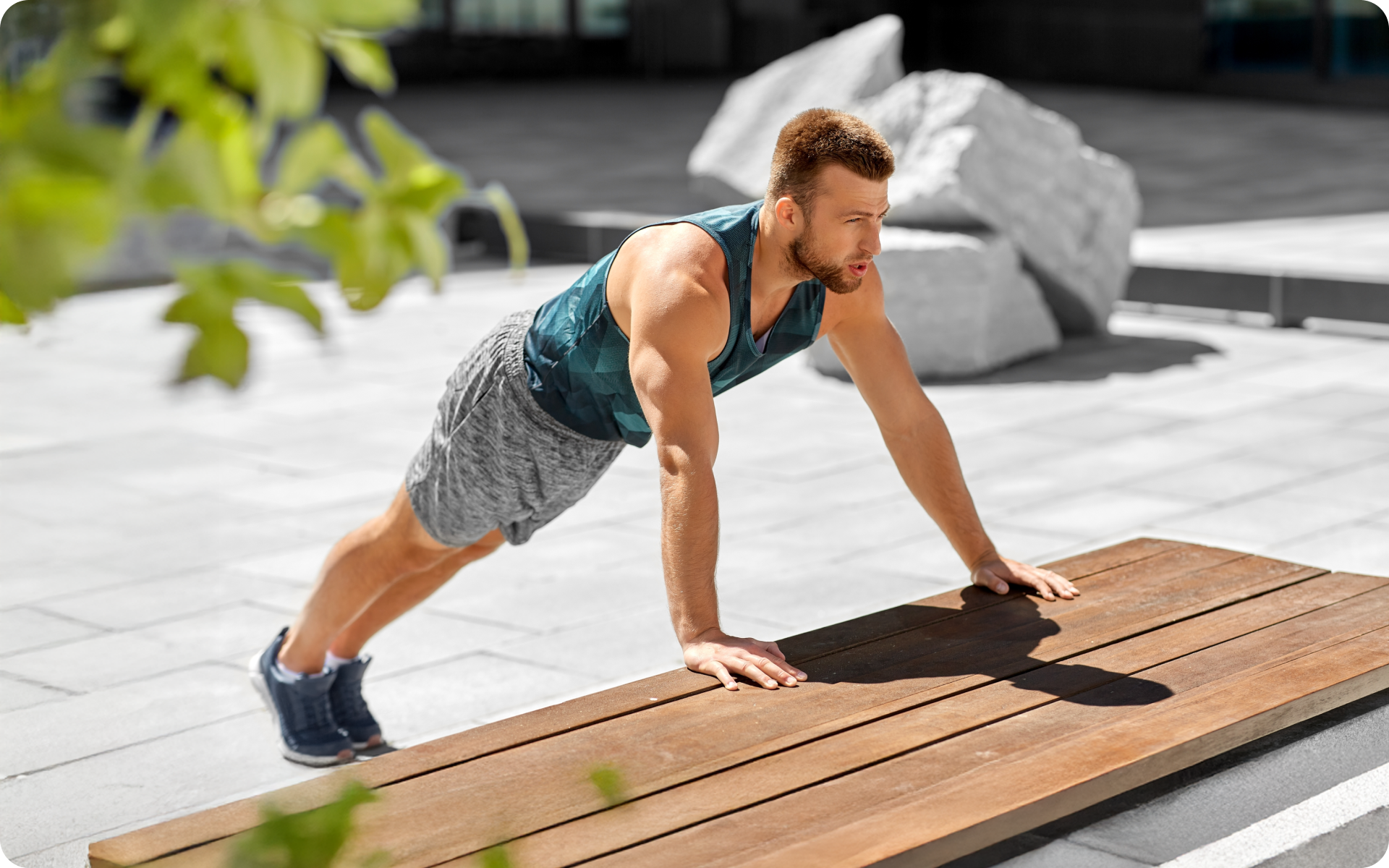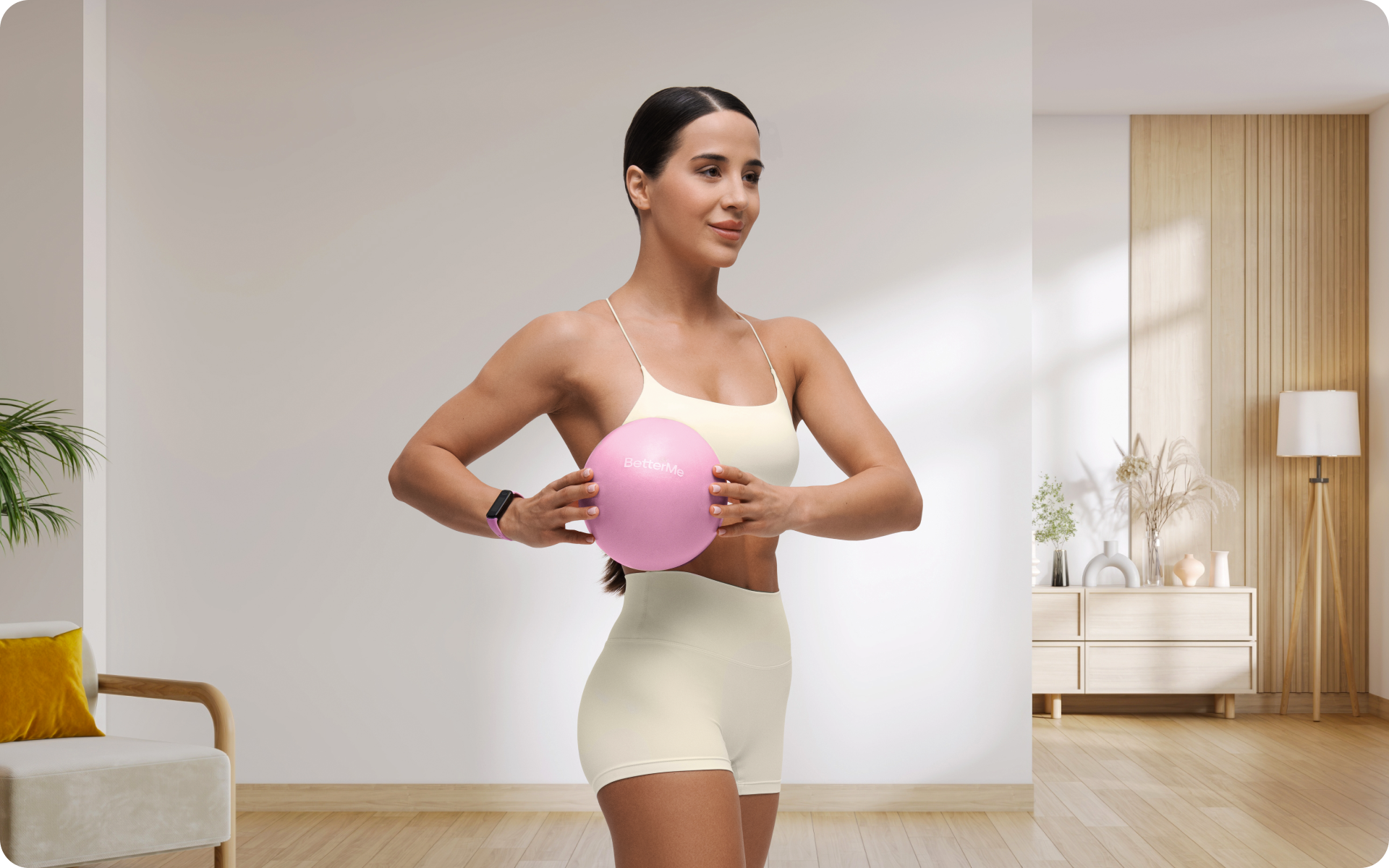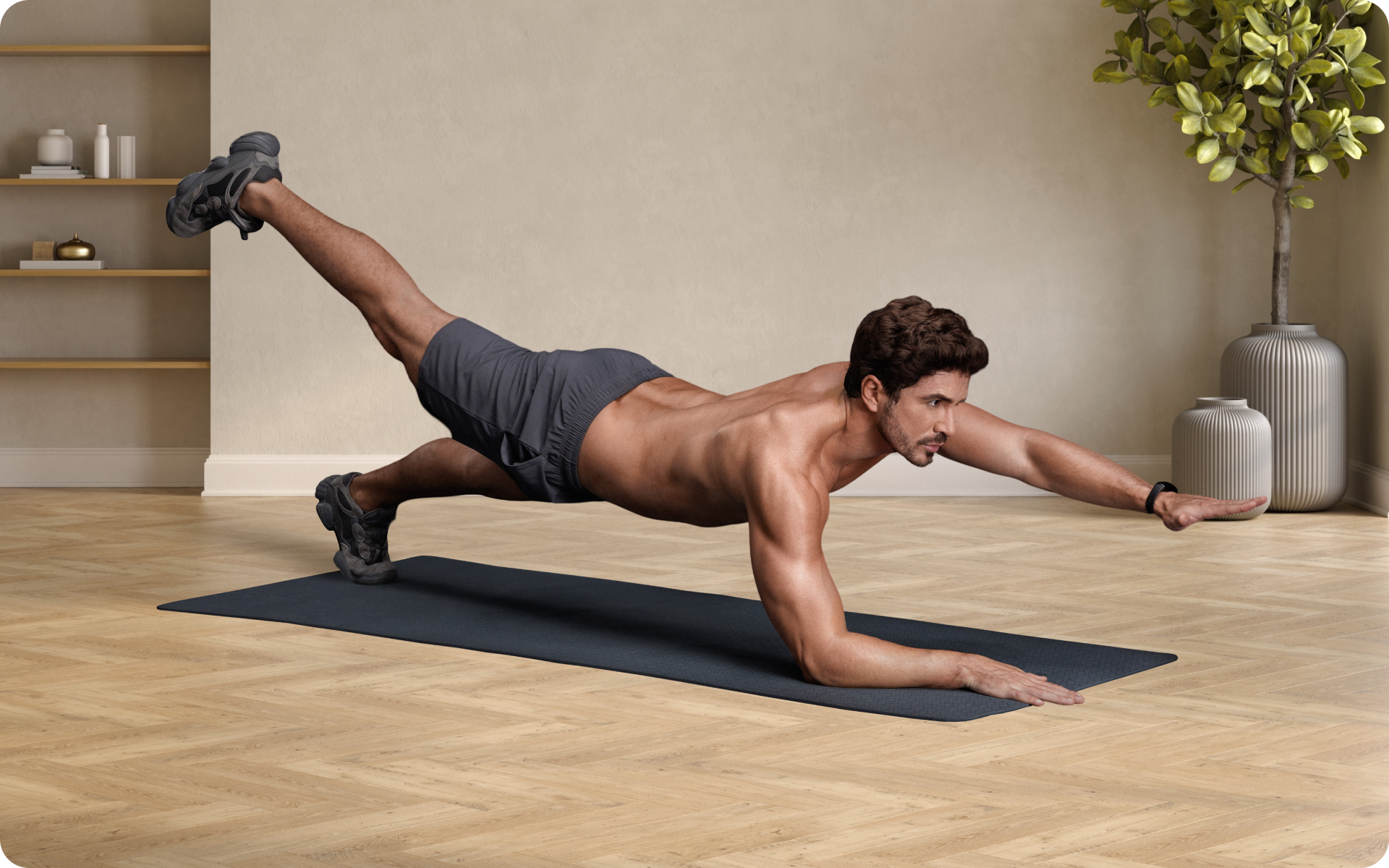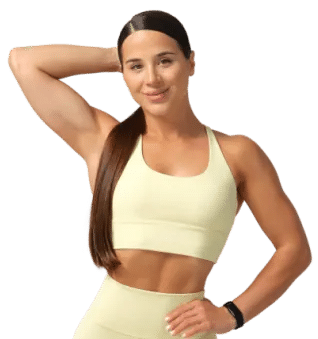Do you want to go from a weak core to great foundational strength? To build abs, a core workout routine at the gym can make a big difference. A structured program emphasizes static and dynamic exercises to engage the core.
Structured variations based on skill and strength level can build muscle, flexibility, and strength. But exercise alone isn’t enough to get a perfect six-pack. You also need a balanced diet that is preferably high in quality protein, dietary fiber, and healthy fats.
This article offers a practical gym routine to boost core function and strength, without causing muscle pain. Let’s jump right in.
How to Do Core Day at the Gym
The core consists of the system of muscles that make up the torso (the front, back, and sides), muscles that stabilize the hips, and sometimes even the muscles that stabilize the shoulders. The perfect gym core workout routine targets all of these areas with static and dynamic exercises.
Static (isometric) exercises build stability and endurance, including planks, side planks, and reverse planks. Dynamic exercises, such as leg raises, crunches, and Russian twists, improve power and strength through movement. Together, they improve dynamic balance, hip mobility, and spinal stability (1).
Aim for 3 to 5 exercises and perform 2 to 3 sets each. Focus on control and form over speed or reps. Start with 2 to 3 static exercises, and increase the hold time. Then incorporate 2 to 3 dynamic movements, and eventually consider adding weights or more reps.
Practice static and dynamic exercises consistently while progressing with weights and increasing the difficulty level. Don’t forget to warm up the muscles with basic exercise to boost blood flow and reduce the risk of injury. You can include some light cardio, such as brisk walking or a stationary bike.
What Machines at the Gym Work Your Core?
Several machines at the gym can effectively target your core muscles. You can use machines to isolate your abs, obliques, and lower back and add resistance.
The machines to try for a gym core workout include:
- Abdominal crunch machine
- Cable machine
- Torso rotation machine
- Roman chair
- Captain’s chair
These machines provide resistance, offer support, and target specific muscle groups. Each machine allows you to add external resistance through your own bodyweight, cables, and weights. They build strength and guide your movement.
Proper form while using the machines can reduce the strain on your lower back and neck. The machines can also add progressive overload which can improve power and stability. They all engage the core in different ways and tighten the upper body. Dive deeper into easy core exercises with our dedicated article.
| How it works the core | Benefits | |
|---|---|---|
| Abdominal crunch machine | Targets the six-pack muscles. As you perform a crunching motion, you flex the spine against resistance. | Controlled movement Progressive overload Consistent range of motion Lower back support |
| Cable machine | It flexes the spine and engages the entire core through twisting motions. | Constant tension Targets both smaller and larger stabilizing muscles Full-body workout Balance and coordination |
| Torso rotation machine | Targets the external and internal obliques with twisting motions and resistance. | Stabilizes the torso Rotational strength Lower back stability Controlled range of motion |
| Roman chair | Engages the posterior chain of the core, particularly the glutes and lower back muscles, through movements such as back extensions. | Strengthens the lower back Engages glutes and hamstrings Spinal stability |
| Captain's chair | Activates the lower portion of the abdominal muscles and the hip flexors. | Minimal back strain Core stability and control Isolates the lower abs Modifiable intensity |
What Core Exercises Should I Do at the Gym?
A well-rounded gym core workout routine should include static and dynamic exercises. They can build stability, endurance, flexibility, and strength. Static holds engage the abdominal muscles without movement. Dynamic exercises use movement to create a strong foundation for more complex workouts.
Static Core Exercises
Static exercises stabilize your breathing patterns and brace your entire midsection. You can increase the hold time as your body adapts to the routine. This can be beneficial for releasing muscle tightness and improving strength.
- Plank
Get on your forearms in a push-up position. Position your elbows right under your shoulders and keep your body straight. Squeeze your belly button in, clench your glutes, and don’t let your hips sag. Take steady breaths and hold this position.
When it comes to weight loss, progress is made by inches, not miles, so it’s much harder to track and a lot easier to give up. The BetterMe: Health Coaching app is your personal trainer, nutritionist, and support system all in one. Start using our app to stay on track and hold yourself accountable!
- Side Plank
Lie on your side and prop yourself up on one forearm. Position your elbow right under your shoulder and stack your feet in front of you for better balance. Lift your hips off the floor and keep your body straight. Squeeze your side abs, reach for the ceiling with one arm, and take deep breaths.
- Reverse Plank
Lie on the floor with your legs straight in front of you. Place your hands on your sides for better balance. Press into your hands and heels and lift your hips off the floor. Keep your body straight, squeeze your glutes, and tighten your core. Take a deep breath and hold.
Dynamic Core Exercises
Dynamic exercises require more functional movement to power up the core. They engage different muscle groups at once and force them to work in coordination with one another with more complex movements. These exercises are often more challenging and can significantly improve performance.
- Leg Raises
Lie on your back with your hands by your side. Press your lower back into the floor and lift your legs toward the ceiling. Bring the legs down without arching the lower back. Go as low as you can without losing control. Focus on slow, controlled movements.
- Crunches
Lie on your back, bend your knees, and position your feet flat on the floor. Place your hands behind your head and gently lift your head and shoulders off the ground. Curl your rib cage toward your hips and squeeze your abs. Slowly lower back down and repeat.
- Russian Twists
Sit on the floor, bend your knees, and place your feet flat on the ground. Lean back while keeping your back straight. Engage your core and twist your torso from side to side. Use dumbbells for added resistance and progressive overload.
Read more: How To Get Rid Of Apron Belly: Everything You Need To Know About This Common Challenge
What Is the Number 1 Core Workout?
The plank is a staple workout for many fitness enthusiasts. Of course, to train the core, you need more than planks, but these are fundamental movements that transmit power between the upper and lower body.
Planks are versatile workouts that are good for the entire body. They engage your obliques, transverse abdominis, rectus abdominis, and glutes. Depending on the variation, they can also activate your latissimus dorsi and other stabilizing muscles for your shoulders. They decrease the risk of injury and improve balance, posture, and flexibility.
Here’s why:
- According to a 2024 study, performing core stability exercises using the “hollowing” maneuver significantly increased the thickness of abdominal and lower-back muscles more than the “bracing” maneuver. Specifically, the bird dog and side plank exercises with hollowing showed the greatest overall muscle thickness increase (2).
- Based on a 2023 report, planks can enhance overall body stability and mobility in older adults. Participants could target the abdominal muscles within the core muscle groups and burn many calories quickly (3, 4).
- In a 2021 case report, the participant experienced improvements in muscle endurance, flexibility, and muscle strength after 4 weeks of plank exercises. Their metabolic rate increased, while their body fat decreased (5).
These benefits carry over to other lifts and exercises, which can improve everyday tasks. Plank exercises are time-efficient and practical for people of different fitness levels. Core workouts at the gym with weights can diversify your workouts, add progressive overload, and offer better gains. To learn more about the deep core exercises for smaller waist, check out our in-depth article on the topic.
What Is a Moderate Core Workout Routine for the Gym?
A moderate core workout is about balance. You should include a mix of beginner workouts that build core strength, improve posture, and support functional movements. These workouts aren’t too easy, nor are they so super intense that they completely exhaust the muscles. The goal is to find that “sweet spot”.
A full-body core workout routine at the gym can:
- Improve balance, stability, and daily movement
- Support spinal health and posture
- Build core endurance without burnout
- Offer steady results
Such exercises require minimal fitness experience and can still tighten the core. You can include a mix of bodyweight training and machines, such as a cable machine or a Captain’s chair.
The table below offers a 30-day moderate workout challenge. Practice 30-45 seconds per exercise with 15 seconds of rest between each one. You can add weights or increase the difficulty depending on your current performance. Our previous article covers everything you need to know about 4 best core exercises for beginners.
| Week 1 | Week 2 | Week 3 | Week 4 |
|---|---|---|---|
| Plank | Light cardio | Reverse plank | Plank |
| Side Plank | Reverse plank | Hanging knee raise | Glute bridge hold |
| Crunches | Leg raises | Dead bug hold | Russian twists |
| Russian twists | Plank | Standing oblique crunches | Leg raises |
Is Core Training 3 Times a Week Enough?
You can incorporate core strengthening exercises for beginners into any workout plan. A lot of people exercise 2 to 3 times a week to lose excess fat and tighten their abdominal area. Others prefer to do it 3 to 4 times a week.
However, if you’re looking for a secret to rock-hard abs in just a few weeks, then you will be disappointed. The core takes a long time to build and develop. It requires a consistent and structured routine. Over time, it’s best to add progressions and increase the volume. The exercises should progress from beginner to intermediate so you can enjoy long-term results and minimize the risk of injury.
If you don’t know where to start, the BetterMe app can help. Whether you’re into planks, dynamic twists, or a mix of both, the app can show you how to master every exercise with the proper form. It creates workouts that balance stability with movement and help you build a stronger foundation.
What to Eat for a Stronger Core
Foods that are rich in calcium and protein are the key to stronger muscles and bones. Salmon, chicken, tuna, and turkey are all light meats that are high in protein but low in carbs. Red meat can be beneficial, but with strict portion control.
Probiotics can help with digestion, muscle mass, and muscle strength. The goal is to enjoy balanced meals with complex carbs, whole foods, and dietary fiber. As belly fat is the most difficult fat to lose, you should avoid ultra-processed products and foods that are high in sugar (5).
For example, you should eat more:
- Whole grains (e.g. quinoa, oats, brown rice)
- Vegetables (e.g. broccoli, bell peppers, spinach)
- Fruits (e.g. berries, apples, bananas)
- Healthy fats (e.g. nuts, seeds, avocados, fatty fish)
- Legumes (e.g. beans, lentils, chickpeas)
- Probiotics (e.g. yogurt, kimchi, kefir)
The BetterMe app can help you plan meals, control portions, and count carbs. Equipped with many recipes, the app can tailor every dish to your needs. Use it to find delicious foods to meet your macro goals.
Dos and Don’ts: For Core Workouts
To get the most out of every exercise, you must focus on quality over quantity. Here are the dos and don’ts when working on your abdominal muscles.
Dos
- Use slow, controlled movements. Prevent pushing your body beyond its limits just so you can get faster results. Instead, take your time and slowly build stamina and endurance.
- Practice deep breaths. Keep breathing throughout the exercise to control the flow of oxygen and calm the mind.
- Keep a good form. Focus on your movement to reduce the risk of injury and target the correct muscles.
- Diversify your workouts. Include static and dynamic exercises to build enough stability, strength, and flexibility.
- Warm up before exercise. Prep the muscles and joints to avoid strains.
- Add progressive overload. Increase the difficulty, duration, and resistance slowly, without overloading your body.
Reasons why BetterMe is a safe bet: a wide range of calorie-blasting workouts, finger-licking recipes, 24/7 support, challenges that’ll keep you on your best game, and that just scratches the surface! Start using our app and watch the magic happen.
Don’ts
- Don’t use only one type of exercise. Focusing only on crunches or planks neglects all other muscle groups and creates a muscle imbalance.
- Don’t arch your back when you practice. It makes the exercise less effective.
- Don’t severely pull your neck. Pulling your neck during a crunch could put more strain on your neck and make the exercise easier and less effective.
- Don’t push yourself beyond the pain. It’s normal to feel some discomfort. But whenever you experience sharp pain, stop the exercise.
- Don’t neglect your meals. Exercise without a good diet isn’t enough to strengthen the core. Your diet is a key component for stronger abs.
Planks are isometric exercises and one of the best options for abs. They act as stabilizers and develop abdominal strength, but you can’t get a six-pack just by practicing planks. You need to diversify your workouts, increase the difficulty level over time, and consume a balanced, high-protein diet. If you are just starting to exercise, then 20 minutes on your core can be enough. Any movement, regardless of how short, can promote circulation, burn fat, and help shape the body. Over time, the body adapts to longer workouts, and you can increase the duration to build more muscle. When you plank, you should be at full intensity. Hold a standard plank for 30 seconds to 1 minute. If you’re already physically active, you can do 3 sets of 30-second planks and slowly increase the time per set in increments of 10 seconds. It depends – yes, if you can handle it. Athletes, bodybuilders, and other experienced fitness enthusiasts may work their abs six times a week. However, that doesn’t mean you should also follow the same routine. Remember that your core is still made up of muscles that need recovery to get stronger too. Focus on your body and choose a core routine that works for you. Your ab workout should include a variety of exercises, such as crunches, planks, and leg raises. You need different tactics that boost muscle development and a lower body fat percentage. For example, prioritize lean protein and complex carbs, but limit highly processed foods and foods containing too much sugar. Yes, abs need a break just like any other muscle. If you exercise regularly, you should take at least one rest day. Beginners should take two or three rest days to reduce the risk of overloading the muscles as this can put you at a great risk of injury. If you train only your core, you’re unlikely to burn too much fat. Core workouts target the abdominal muscles to tone and strengthen the abs. If you want to lose excess fat, you need full-body workouts and progressive overload.Frequently Asked Questions
Do planks give you abs?
Is 20 minutes of core enough?
How long should I plank?
Can I hit my abs every day?
How can I get 6-pack abs?
Do abs need rest days?
Do core workouts burn belly fat?
The Bottom Line
Abs are just like every other muscle in the body – they’re visible, stronger, and more defined after a structured workout routine paired with a balanced diet. The only problem is that the belly is the most challenging area to target. This is because losing belly fat takes effort, time, and consistency.
Once your body fat is low enough, a good core workout can pump the muscles and give you the six-pack you’ve always wanted. The key to firmer and tighter core muscles lies in diversified workouts. To get long-term results, you need both static and dynamic stretches. The core can be hard to build, but you can get in shape with persistence, dedication, and effective planning.
DISCLAIMER:
This article is intended for general informational purposes only and does not serve to address individual circumstances. It is not a substitute for professional advice or help and should not be relied on for making any kind of decision-making. Any action taken as a direct or indirect result of the information in this article is entirely at your own risk and is your sole responsibility.
BetterMe, its content staff, and its medical advisors accept no responsibility for inaccuracies, errors, misstatements, inconsistencies, or omissions and specifically disclaim any liability, loss or risk, personal, professional or otherwise, which may be incurred as a consequence, directly or indirectly, of the use and/or application of any content.
You should always seek the advice of your physician or other qualified health provider with any questions you may have regarding a medical condition or your specific situation. Never disregard professional medical advice or delay seeking it because of BetterMe content. If you suspect or think you may have a medical emergency, call your doctor.
SOURCES:
- The effect of static and dynamic core exercises on dynamic balance, spinal stability, and hip mobility in female office workers (2019, nih.gov)
- A Comparison between Core Stability Exercises and Muscle Thickness Using Two Different Activation Maneuvers (2024, mdpi.com)
- Effects of plank exercise on respiratory capacity, physical fitness, and immunocytes in older adults (2023, nih.gov)
- Which trunk exercise most effectively activates abdominal muscles? A comparative study of plank and isometric bilateral leg raise exercises (2019, nih.gov)
- Effects of High Intensity Plank Exercise on Physical Fitness and Immunocyte Function in a Middle-Aged Man: A Case Report (2021, nih.gov)
- Impact of probiotics on muscle mass, muscle strength and lean mass: a systematic review and meta‐analysis of randomized controlled trials (2022, nih.gov)
